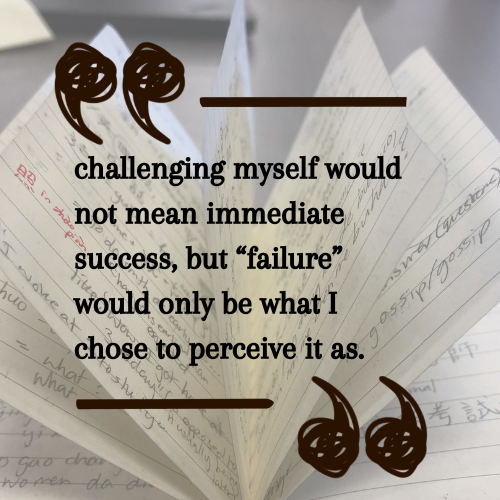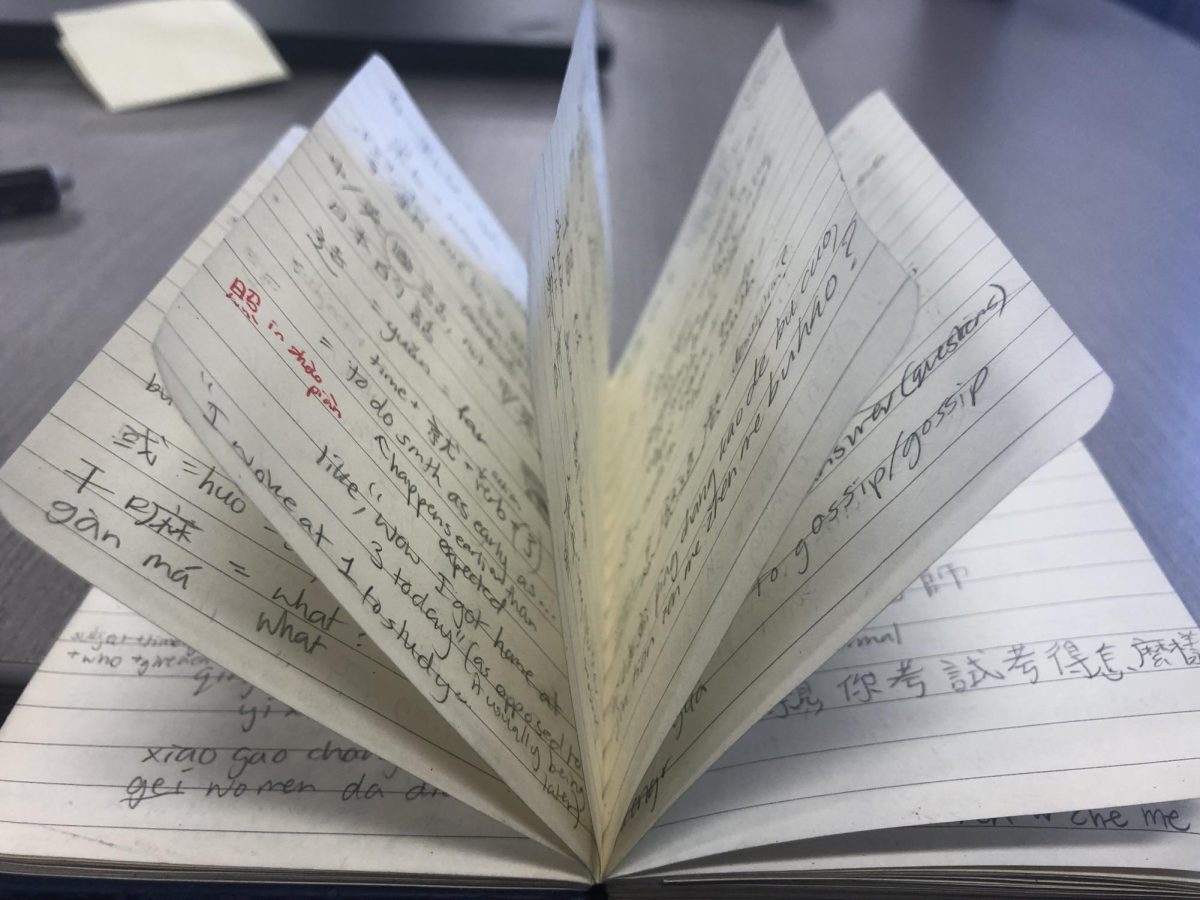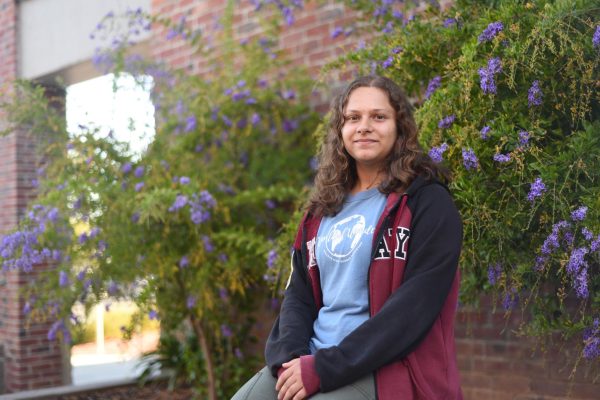“I’m going to learn Chinese.”
I stood up, crossed the room to my computer and clicked “Chinese 1” under the electives tab on my course selection form. My mom looked at me, and I could see her hesitancy. Bits of our previous conversations where she had expressed her doubts to me floated between us. But I had made my decision, and I was already smiling as I clicked “submit.”
My heritage and related interactions have greatly shaped my relationship with language. “Oh, you’re part German? Can you speak it?” No. “Really, your mom’s Indian? What language do you speak then?” Only English. I was growing tired of these questions and responses over the years, and my own limitations had begun to disappoint me. I knew I was capable of learning other languages, I just hadn’t chased after my opportunities to do so.
As a child, I was very shy, never doing anything without my sister or mom there to support me. I limited myself to what was familiar, never testing my limits because I was afraid of failure. That’s why I never asked my mom to teach me her language. Although my shyness faded over time, I still hadn’t pushed myself to pursue what I wanted to, including learning a new language.
So when ninth grade course selection rolled around, I saw it as my chance to step out of my comfort zone: four language course offerings, and I could choose any of them. My elementary school in New Mexico had taught me basic Spanish, and my sister — whose example I always followed — was already in Spanish 3. It seemed the obvious choice to take Spanish, but when I went to click it on the course selection form something held my finger back.
I couldn’t help but feel reluctant to choose Spanish 1. I knew I would have fun learning the language if I chose to, continuing what I had started back in New Mexico in a subject where I already had a safe foundation. I had also heard the rumors surrounding the other language courses, especially Chinese — according to people I asked, only fluent Chinese speakers took the course. Paired with its notoriously difficult characters and pronunciation, I immediately dismissed any possibility of learning Chinese, concluding that it was simply unachievable, and therefore not an option at all.
But as the date for course selection submission neared and I remained undecided, I recalled what I’d learned from my dear friend Shannon who shaped who I am today:
Challenge yourself.

The common piece of advice took on a new meaning after watching Shannon learn to play volleyball. She had never played it before and was years behind athletes her age skill-wise, but she never expressed perturbation. She poured all of her passion and dedication into the process of learning without expectations for a result. I learned from watching her that challenging oneself would not mean immediate success, but “failure” would only be what I chose to perceive it as.
It was with this mindset that I approached my mom with my decision. It was a late afternoon in February, and the dining room where my mom was sitting smelled faintly of warm strawberries. My hand clutching my computer was slightly sweaty, and I couldn’t tell whether it was the California heat or my own anticipation causing it. When I cleared my throat and told her my choice, she looked up from her crossword puzzle and voiced the concerns I had been conflicted over myself. But this time I wasn’t going to avoid what was hard; avoiding difficulties wouldn’t get me to where I wanted to be as a person.
Now, I look forward to my Chinese class with no regrets. In the very Chinese 1 class I had been so worried about, I surpassed all expectations for my performance, not only doing well in the class but proving to myself that I could do hard things and have fun doing it. My mindset about enjoying the process translated to other aspects of my life as well; I became invested in actually learning concepts in math beyond what was enough for a good grade, and I reached for opportunities that I wouldn’t have before.

When I walked into the Chinese 1 classroom on my first day of school, I had no idea what to expect. But as I looked around the classroom, I saw people who looked like me and people who didn’t. People who had likely been speaking Chinese with their parents for years, and people with absolutely no experience. And as class started and Chang Laoshi smiled at me, I realized something: I could’ve been the only person in that room who didn’t speak a word of Chinese, and I would still have made the same decision to show up.










